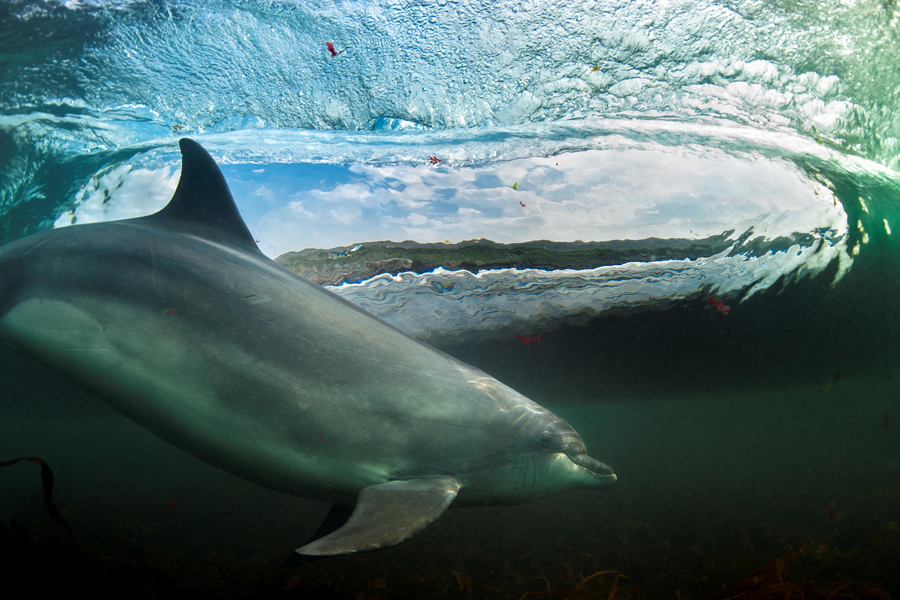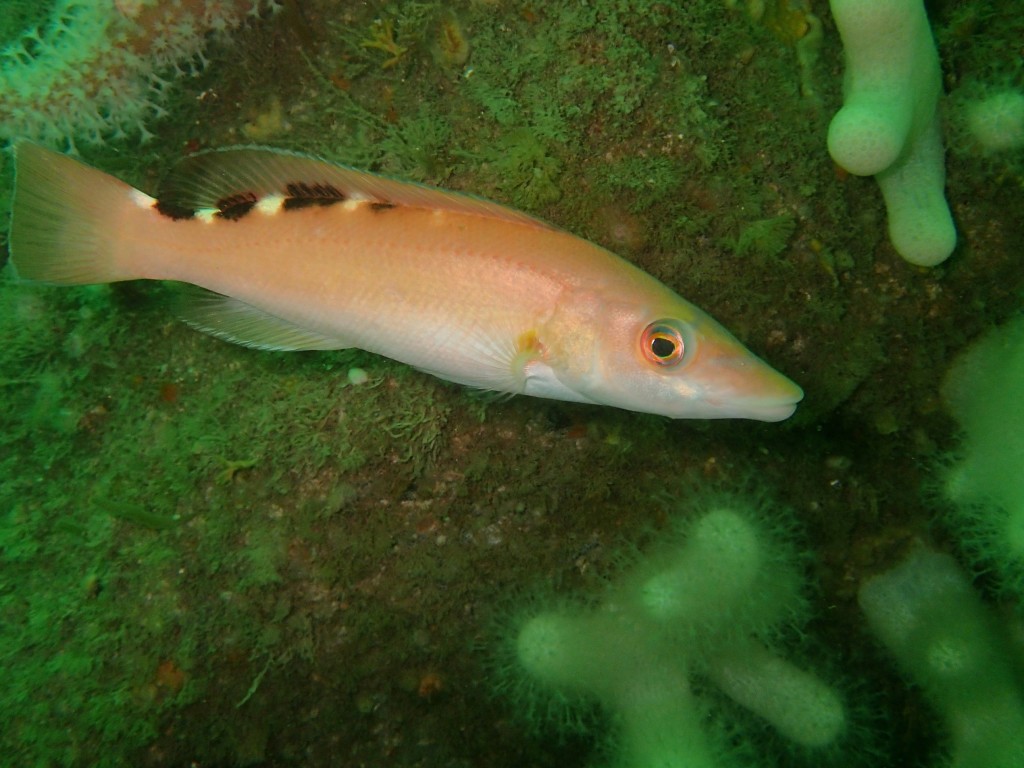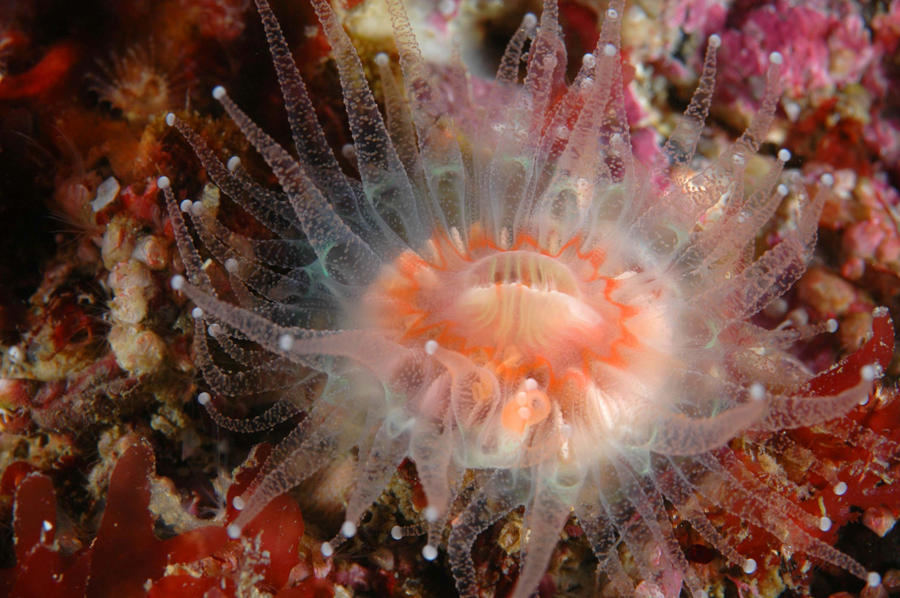Marine Life & Conservation
First wave of Marine Conservation Zones for Cornwall welcomed

Photo: Dolphin Surfing by George Karbus, winner of the RSWT Photo Competition 2013
News that the UK government are to create 27 Marine Conservation Zones has been met with a positive response from conservation groups – however, many are warning that this is just the first step, and that much more must be done to protect the marine life (endangered or otherwise) that inhabits UK waters. Here’s what the Cornwall Wildlife Trust has to say on the matter:
As the Government today confirms immediate designation of 27 Marine Conservation Zones (MCZs), Cornwall Wildlife Trust welcomes this first step towards the creation of a network so absolutely vital to ensure the healthy future of our seas.
Cornwall will benefit from four coastal Marine Conservation Zones in sites with outstanding marine life: The Manacles, Padstow Bay and surrounds, Whitsand and Looe bay, and Upper Fowey and Point Pill. Nearby, the Isles of Scilly and Tamar Estuaries will also benefit from creation of MCZs. There are also three offshore MCZs being designated off Cornwall: the Canyons, South West Deeps and East of Haig Fras.
Photo: Matt Slater
Ruth Williams, Living Seas Manager for Cornwall Wildlife Trust says,
“Marine Conservation Zones as part of a network of protected areas are one of the best tools to protect marine wildlife effectively and restore our seas to their full potential following decades of neglect and decline. We welcome this long awaited news that finally our coastal marine wildlife will be provided the greater recognition and protection it deserves…
This first step in the creation of a network of Marine Conservation zones will help make the future of our inspiring marine life more secure, and will aid recovery of our valued marine areas.”
“ We would like to thank all of the dedicated volunteers who have been invaluable in collecting information to support this campaign and for helping to raise public awareness of the need for Marine Conservation Zones. It is also heartening to hear that the Government has committed to establishing more Marine Conservation Zones over the coming four years. Cornwall has many more rich and vitally important marine sites that still require urgent protection so our campaign doesn’t end here.”
Photo: Tony Sutton
Joan Edwards, The Wildlife Trusts’ Head of Living Seas says,
“Marine protection is an issue which matters to anyone who has ever spent happy afternoons exploring rockpools or been enchanted by chance encounters with dolphins, whales or one of the many other captivating species we enjoy in our waters.”
“It is vital for the appropriate management of the 27 designated sites to be implemented as soon as possible. We look forward to working with Government to ensure this happens.
“We are buoyed by the Government’s commitment to establishing future tranches of Marine Conservation Zones, demonstrating that it also remains committed to completing the ecologically coherent network of Marine Protected Areas so desperately needed.”
This announcement brings us closer to realising our vision of Living Seas where marine wildlife is able to thrive and recover from human impacts. Well protected marine ecosystems will be more resilient to future challenges from climate change and ocean acidification and healthy seas are also vital to support productive fisheries for the future.
Designation of 27 Marine Conservation Zones:
Blogs
Invitation from The Ocean Cleanup for San Francisco port call

6 years ago, The Ocean Cleanup set sail for the Great Pacific Garbage Patch with one goal: to develop the technology to be able to relegate the patch to the history books. On 6 September 2024, The Ocean Cleanup fleet returns to San Francisco bringing with it System 03 to announce the next phase of the cleanup of the Great Pacific Garbage Patch and to offer you a chance to view our cleanup system up-close and personal.
We look forward to seeing you there.
To confirm your presence, please RSVP to press@theoceancleanup.com
PROGRAM
Join The Ocean Cleanup as our two iconic ships and the extraction System 03 return to San Francisco, 6 years and over 100 extractions after we set sail, to create and validate the technology needed to rid the oceans of plastic.
Our founder and CEO, Boyan Slat, will announce the next steps for the cleanup of the Great Pacific Garbage Patch. Giving you a chance to view our cleanup system and the plastic extracted.
Hear important news on what’s next in the mission of The Ocean Cleanup as it seeks to make its mission of ridding the world’s oceans of plastic an achievable and realistic goal.
Interviews and vessel tours are available on request.
PRACTICALITIES
Date: September 6, 2024
Press conference: 12 pm (noon)
Location: The Exploratorium (Google Maps)
Pier 15 (Embarcadero at Green Street), San Francisco, CA
Parking: Visit The Exploratorium’s website for details.
RSVP: press@theoceancleanup.com
Video & photo material from several viewing spots around the bay
We look forward to seeing you there!
ABOUT THE OCEAN CLEANUP
The Ocean Cleanup is an international non-profit that develops and scales technologies to rid the world’s oceans of plastic. They aim to achieve this goal through a dual strategy: intercepting in rivers to stop the flow and cleaning up what has already accumulated in the ocean. For the latter, The Ocean Cleanup develops and deploys large-scale systems to efficiently concentrate the plastic for periodic removal. This plastic is tracked and traced to certify claims of origin when recycling it into new products. To curb the tide via rivers, The Ocean Cleanup has developed Interceptor™ Solutions to halt and extract riverine plastic before it reaches the ocean. As of June 2024, the non-profit has collected over 12 million kilograms (26.4 million pounds) of plastic from aquatic ecosystems around the world. Founded in 2013 by Boyan Slat, The Ocean Cleanup now employs a broadly multi-disciplined team of approximately 140. The foundation is headquartered in Rotterdam, the Netherlands, and opened its first regional office in Kuala Lumpur, Malaysia, in 2023.
Find out more about The Ocean Cleanup at www.theoceancleanup.com.
Marine Life & Conservation
SHARK MONTH ARRIVES AT ROYAL WILLIAM YARD, PLYMOUTH

A shark has been spotted approaching Royal William Yard in Plymouth, much to the surprise of swimmers, paddleboarders and onlookers.
With its distinctive dorsal fin cutting through the water, the sizeable shark swam along the coastline, before turning to head inland towards Firestone Arch at Royal William Yard. The appearance drew a crowd, who were captivated for more than an hour by the unusual sight – and it was all caught on video.
The shark is one of many expected sightings at Royal William Yard over the coming weeks… because today marks the start of Shark Month!
In reality, the ‘shark’ spotted along the Plymouth shoreline was actually a custom-made model, created by the team at Royal William Yard and sailed underwater by Caroline Robertson‑Brown from the Shark Trust, who donned scuba diving gear for the occasion.
The stunt took place to launch Shark Month in style and draw attention to the work of the leading international conservation charity, which is based in Britain’s Ocean City. Spectators were reassured that the water was safe and many entered into the spirit of the performance, swimming or sailing alongside the shark.
Shark Month will take place across Royal William Yard throughout July and will feature an extravaganza of art, entertainment and advocacy for everyone to enjoy. The packed programme of events starts with an art exhibition and ends with a trip on paddleboards with shark experts – with everything from a shark quiz to a Jaws screening in between.
Paul Cox, CEO of the Shark Trust, said: “There are often assumptions and misconceptions when it comes to sharks. This was certainly the case with the shark spotted at Royal William Yard! While the British coastline is home to many species of shark, this was not one of them. However, we’re thrilled it caught people’s attention, because seeing a shark is a special and memorable moment. That is precisely why we want to celebrate these incredible creatures, highlight the need for conservation, and ask for help to safeguard their future.”
For more information about Shark Month at Royal William Yard, visit the Shark Trust Website.
Images and video: Jay Stone
-

 Blogs2 months ago
Blogs2 months agoDiving With… Nico, Ocean Earth Travels, Indonesia
-

 News1 month ago
News1 month agoMurex Bangka Announce New Oceanfront Cottages & Beachfront Dining
-

 Blogs2 months ago
Blogs2 months agoA new idea in freediving from RAID
-

 Marine Life & Conservation1 month ago
Marine Life & Conservation1 month agoIceland issue millionaire whale hunter a licence to murder 128 vulnerable fin whales
-

 Marine Life & Conservation2 months ago
Marine Life & Conservation2 months agoThe Shark Trust Great Shark Snapshot is back
-

 News3 months ago
News3 months agoCharting New Waters; NovoScuba Goes Global with the Launch of their Revolutionary Dive Training Agency!
-

 Gear News1 month ago
Gear News1 month agoNew Suunto Ocean – a dive computer and GPS sports watch in one for adventures below and above the surface
-

 Marine Life & Conservation Blogs2 months ago
Marine Life & Conservation Blogs2 months agoBook Review: Plankton


















